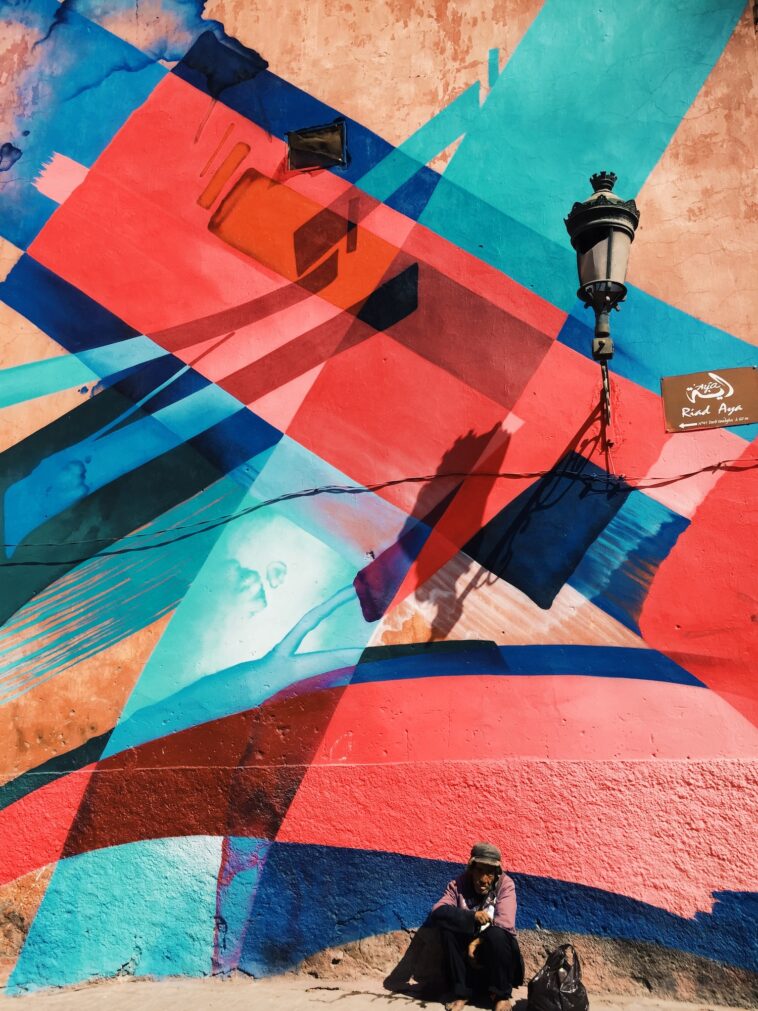Murals, transcending mere wall decorations, have long been a profound medium of artistic expression and social commentary. Their evolution from ancient techniques to modern digital interpretations speaks volumes about their role in mirroring societal changes and cultural narratives.
Historical Development and Techniques
Fresco Painting: A Time-Honored Tradition
- Origin: Stemming from the Italian term ‘affresco,’ which translates to “fresh.”
- Process: This technique involves the meticulous application of paint onto freshly laid wet plaster. The true artistry lies in the chemical fusion of the pigment with the drying plaster, ensuring the mural’s longevity and vibrancy.
- Durability: A testament to its enduring nature, fresco painting has preserved its color and freshness for centuries, making it a preferred choice for timeless artworks.
The Versatility of Fresco-Secco Painting
- Method: A distinct approach, fresco-secco involves painting on dry plaster.
- Requirement: It necessitates a binding medium such as egg, paste, or acrylic for effective pigment adhesion, offering more flexibility in the artistic process.
Mezzo-Fresco: Balancing Technique and Preservation
- Characteristic: Painted on almost-dry plaster, this method strikes a balance between the traditional fresco and fresco-secco.
- Advantage: This technique is less invasive to the plaster, facilitating easier preservation and longevity.
Material Innovations in Mural Art
- Greco-Roman Era: The era saw the use of encaustic colors, a significant advancement in mural materials.
- Tempera Painting: One of the oldest methods known, employing egg as a binder to create vivid and lasting murals.
- Oil Painting in the 16th Century: This period marked the advent of oil painting on canvas, revolutionizing mural art by allowing for the creation of murals on canvas first, which were then affixed to walls.
Mural Creation Process: A Blend of Art and Precision
- Initial Consultation and Design: The process begins with detailed design planning and cost estimation, ensuring a clear vision and efficient execution.
- Scaling Techniques: Utilization of a grid system is crucial for accurate image scaling, transferring the design seamlessly onto large surfaces.
Application Techniques
- Direct Painting: Some muralists opt for painting directly on the surface, eschewing preliminary sketches for a more spontaneous creation.
- Protective Measures: The application of varnish or protective glazes is essential in preserving the integrity and longevity of the mural.
Modern Approaches and Digitalization in Murals
Quick Method Murals
- Materials: Modern murals often employ POP clay and adhesives for a quick and efficient setup.
- Process: The painting commences post-clay drying and canvas preparation, streamlining the mural creation process.
The Rise of Digitally Printed Murals
- Advantages: This method allows for high-quality reproduction of existing artworks, opening up new avenues for mural art.
- Customization: Digitalization caters to the growing demand for personalization and overcomes size limitations, making murals more accessible and versatile.
Murals as Socio-Political Instruments
The Impact of the Mexican Mural Movement
- Period: This movement gained prominence in the 1930s.
- Notable Artist: Diego Rivera, among others, used murals as a platform for political and social commentary, profoundly impacting public consciousness.
- Impact: The movement underscored the power of murals in voicing societal issues and sparking dialogue.
Contemporary Social Murals
- Focus: Today’s murals often tackle pressing issues like racism, environmentalism, and community histories.
- Notable Example: The Bardia Mural by John Frederick Brill stands as a poignant example of this genre.
The Role of Murals in Public Spaces
Murals in Advertising and Public Statements
- Wallscape Murals: These large murals, often advertisements or public statements, adorn building exteriors, evolving from traditional sign-writing to large-scale printed media.
- Historical Significance: They represent a fusion of art, commerce, and public messaging, creating impactful visual statements in urban landscapes.
Murals in Conflict Zones
- Example: The political murals of Northern Ireland serve as a stark reminder of the region’s tumultuous history.
- Impact: These murals are not just art; they are historical documents, reflecting and influencing the socio-political landscapes of their times.
Conclusion: The Ever-Evolving Art of Murals
Murals have continually adapted and evolved, capturing the essence of the times and societies they represent. From the ancient frescoes to contemporary digital prints, they offer a unique lens through which we can view our shared history and culture. Whether serving as a vehicle for political expression, social critique, or sheer artistic beauty, murals remain an indomitable force in storytelling and





